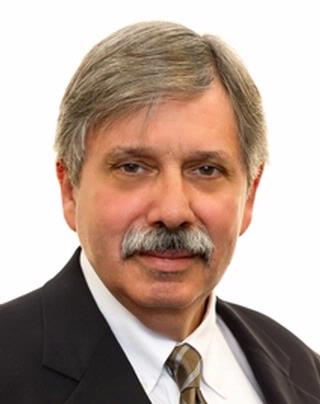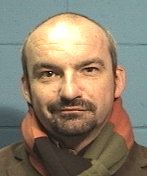INVITED SPEAKERS
| Prof. Heidi H. Harralson Department of Criminal Justice & Criminology East Tennessee State University |
 |
|
Title: Handwriting in the Digital Age Abstract: The media has extensively reported that handwriting is dead, but have the media’s reports been accurate? In a rush to embrace the latest digital tablet or iPhone, have we neglected that handwriting may be more important than those who promote technology want to admit? Media’s reports and other critics of handwriting misrepresented the cultural shift in handwriting as we embraced technology. Handwriting did not die and it is not exclusive of technology, but it has changed. We are seeing an increasing number of handwriting samples and signatures that do not exhibit the complexity or graphic maturity that allows for an effective forensic examination of handwriting characteristics. Many in the younger generation do not know how to write or read cursive handwriting while keyboarding and texting have replaced many handwritten activities. Our signatures are impacted by technology and we have lost the graphic stylization and complexity of formal, cursive handwriting in electronic tablet formats. Some young adults do not know how to sign their signature raising the question as to how the signature and its importance is shifting culturally. We will examine the effects of digital technology on handwriting, the decline and return of cursive handwriting, and review the challenges associated with analyzing and interpreting handwriting samples with limited graphic maturity and complexity. We will review methods in the analysis of electronic signatures in forensic handwriting identification. In spite of the complications created by digital technology associated with handwriting, there are several positive benefits of electronic handwriting samples that are captured using sophisticated software systems at a high resolution. The capture of handwriting electronically has opened up research avenues that were not previously possible as computerized methods quantify temporal handwriting features. The method in which signatures are captured varies considerably in real-world applications necessitating the development of standards in the forensic analysis of electronic signatures. Analysis of electronic signatures requires the assessment of different variables that influence handwriting that are not applicable to wet ink or conventional signatures. We will review the special challenges associated with the forensic analysis of electronic signatures in addition to how technology and advances in research are changing the way handwriting is analyzed. Biography: Heidi Harralson has lectured extensively to professional organizations and universities on the handwriting sciences internationally. She has published original research in peer-reviewed journals on forensic handwriting and document examination topics. Her research work has focused on electronic signatures, handwriting and neuromotor disorders, development of training courses, and other topics in the handwriting sciences. She has authored books in the handwriting sciences including Developments in Handwriting and Signature Identification in the Digital Age (2013), which has been translated and published in Italian, and Forensic Handwriting Examination of Motor Disorders and Forgery: Research and Applications (2008). She is the co-author of a chapter on evidential documents in Crime Scene Investigation (2013) and she is the co-author of Huber and Headrick’s Handwriting Identification: Facts and Fundamentals (2017) which is currently in press. Her work has been referenced in the ENFSI Guidelines for Best Practice in the Forensic Examination of Handwriting. She has practiced forensic document examination professionally since 1997. She has been court-qualified in the U.S. and in Mexico and has worked on cases throughout the U.S. and internationally. She has testified in State and Federal courts, and is the managing partner of Spectrum Forensic International, LLC, a full-time handwriting and document examination practice. She is a board-certified diplomate through the Board of Forensic Document Examiners and the National Association of Document Examiners (NADE). She was President of NADE (2013-2017) and has served NADE in other professional capacities. She holds a Bachelor of Science in the behavioral sciences, a Master of Arts in handwriting science and forensic document examination, and a forensic crime scene technician certificate. In 1999, she assisted in the development of courses for a graduate certificate degree in Forensic Document Examination at East Tennessee State University (ETSU). Currently, she is an affiliate professor at ETSU where she teaches graduate courses in forensic document examination |
|
| Prof. Mark H. Schieber Head of the Neural Control of Hand and Finger Movements Laboratory School of Medicine and Dentistry University of Rochester Medical Center |
 |
|
Title: Control of the hand and arm: Distributed, but serial rather than parallel processing Abstract: We typically have the impression that we move one finger at a time during actions such as typing or playing a musical instrument. Careful inspection shows, however, that in virtually all such performances multiple fingers move simultaneously. This concurrent motion of multiple fingers reflects the underlying structure of the hand and the neuromuscular system that controls it. For example, the soft tissues of the hand produce some degree of coupling between adjacent digits, as do the interconnections between certain tendons. In addition, certain muscles have motor units that exert tension on the tendons to adjacent digits. These various forms of biomechanical coupling require active stabilization of other fingers while a particular finger moves. Furthermore, many single corticospinal neurons act on multiple muscles which in turn act on different digits. And finally, within the primary motor cortex—which is essential for dexterous, individuated finger movements—neurons active during the movement of any given finger are widely distributed and extensively intermixed with the neurons active during movement of any other finger. Hence the entire system controlling the hand is active even when we think we are moving only a single finger. Biography: Marc H. Schieber received his A.B. (1974) and M.D./Ph.D. (1982) from Washington University in St. Louis, St. Louis, MO, USA. Currently he is Professor of Neurology, Neuroscience and Biomedical Engineering at the University of Rochester, Rochester, NY, USA. By investigating different levels of the neuromuscular system controlling the hand in monkeys and humans, in health and disease, he has become an internationally recognized expert on control of hand and finger movements. His work has included studies of the kinematics of finger movements, the structure and electromyographic activity of finger muscles, single neuron and local field potential activity in the primary motor cortex (M1) hand representation, as well as the deficits produced by reversible inactivation of M1 or of the ventral premotor cortex (PMv). He has studied the finger movement impairments produced by stroke, and alterations in the brain following amputation of the hand. His comprehensive work changed the prevailing view of the M1 upper extremity representation from that of a well-ordered piano keyboard to a new view in which distributed activation occurs in M1 for any given movement, even that of a single finger. His studies have challenged the notion that M1 is a stationary platform for execution of motor programs, showing instead that M1 provides a flexible substrate with outputs that can change rapidly to accommodate novel situations. His investigations contribute to the larger goals of improving hand function in patients with neurological disease and providing neuroprosthetics for patients after amputation or paralysis.
|
|
| Prof. Oliver Tucha Head of the Department of Clinical and Developmental Neuropsychology Faculty of Behavioural and Social Sciences University of Groningen |
 |
|
Title: Handwriting in Children with Attention Deficit Hyperactivity Disorder – A story about devils, dreamers, crippled legs and an “Aha!” experience. Abstract: It has been shown that children with attention deficit hyperactivity disorder (ADHD) suffer from handwriting difficulties. This lecture will present the results of a series of studies on children diagnosed with ADHD concerning (I) their attention impairments and handwriting difficulties, (II) the effects of stimulant drug treatment on various attentional functions of children with ADHD, (III) the stimulant-induced alterations of both qualitative and quantitative (i.e. kinematic) features of handwriting, (IV) the interaction between handwriting fluency and conscious control of handwriting, and (V) possible approaches to the treatment of handwriting difficulties in children with ADHD. This presentation will also tell how studies on handwriting challenged our understanding and practice of treatment of ADHD in childhood. Biography: Oliver Tucha studied psychology at the University of Freiburg, Germany. After completion of his BSc and MSc in psychology, he went on to do his PhD in neuropsychology at the University of Luebeck, Germany, which he completed in 1997. He worked as assistant professor and associate professor in the field of clinical neuropsychology at the University of Regensburg, Germany, and became full professor of applied neuropsychology in 2006 at the same university. In the same year, Oliver Tucha became full professor of clinical neuropsychology at the University of Plymouth, UK. In 2009, he was appointed as full professor of clinical neuropsychology and head of department of clinical and developmental neuropsychology at the University of Groningen, the Netherlands. Oliver Tucha published over 150 research articles in the field of clinical neuropsychology, developed various neuropsychological test procedures, is an active member of national and international neuropsychological societies and organised various national and international conferences. His research is clinical and/or experimental in nature and his research interests focus on the clinical neuropsychology of children and adults with neurological or psychiatric diseases. In this context, he performed studies on patients with attention deficit hyperactivity disorder, brain tumours, Parkinson’s disease, dementia, epilepsy, traumatic brain injury, depression and autism. These studies do not only focus on the nature of deficits but also on the effects of treatment including neuropsychological rehabilitation, pharmacological treatment and neurosurgery. He has a particular interest in attention impairments as well as attentional functioning, including attentional control and automaticity of behavior (e.g. handwriting). |
|
